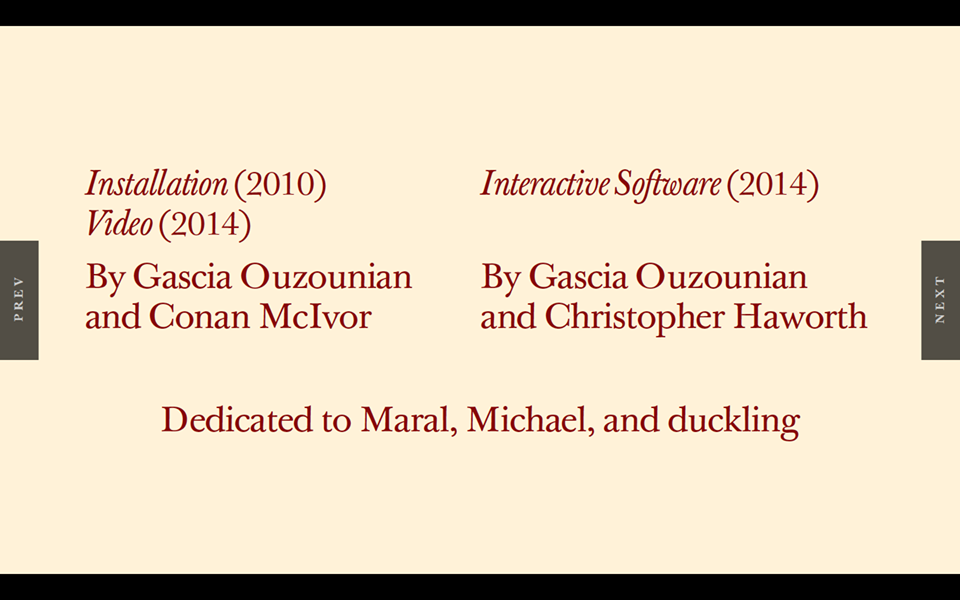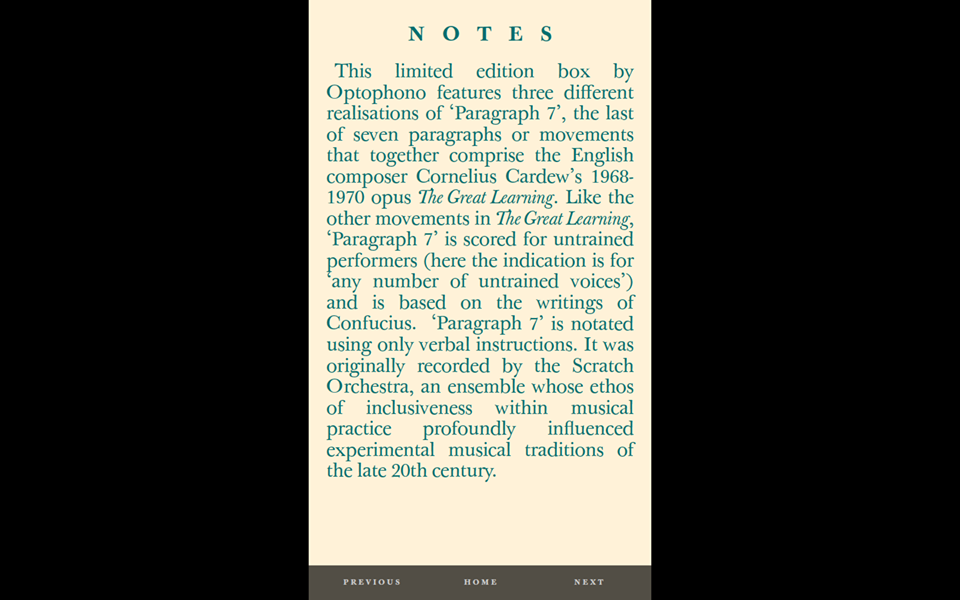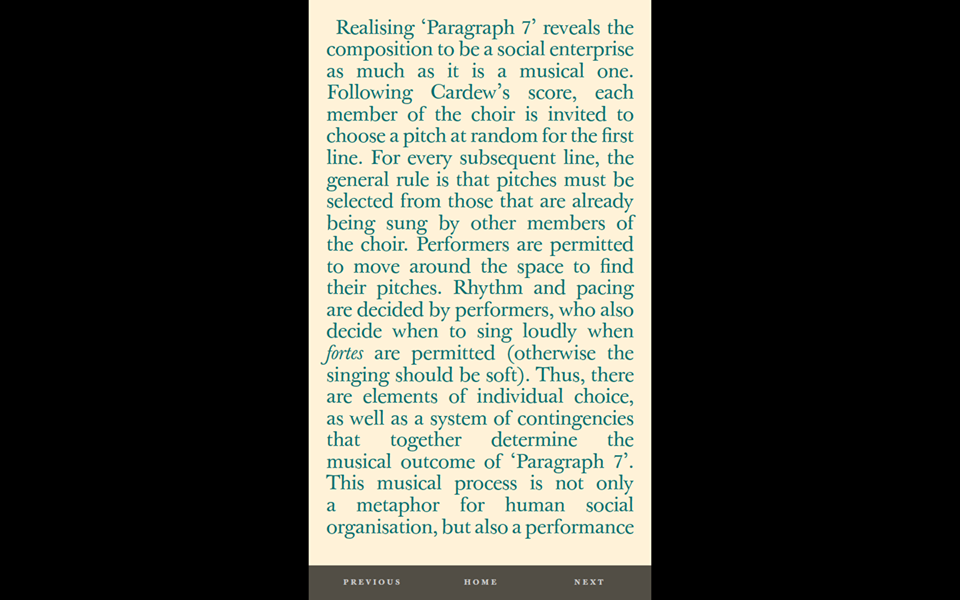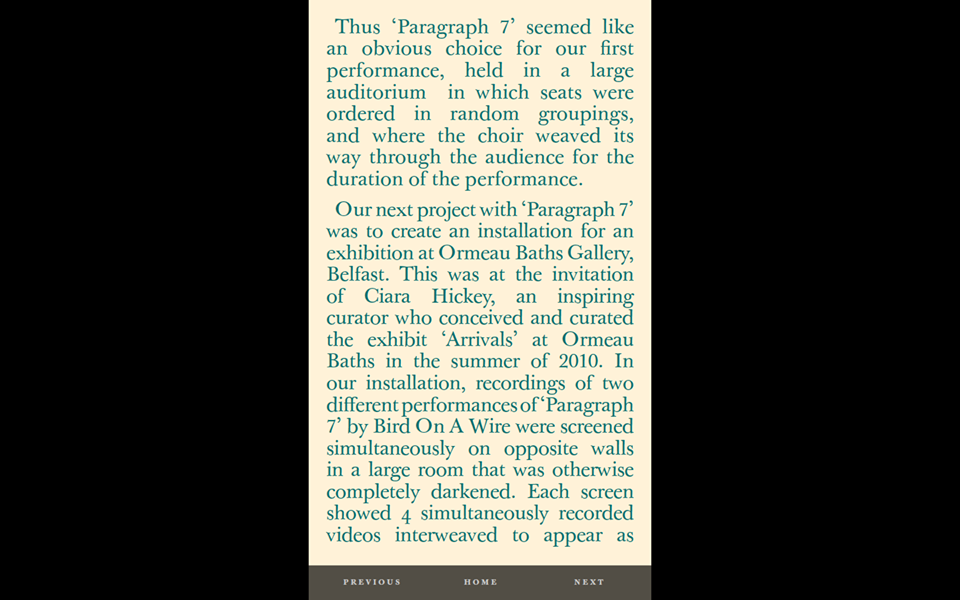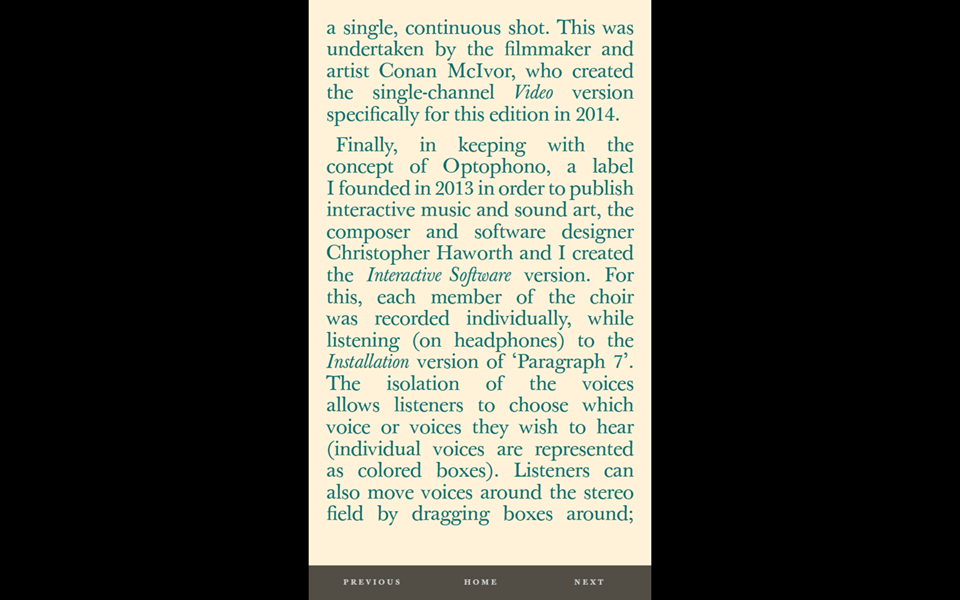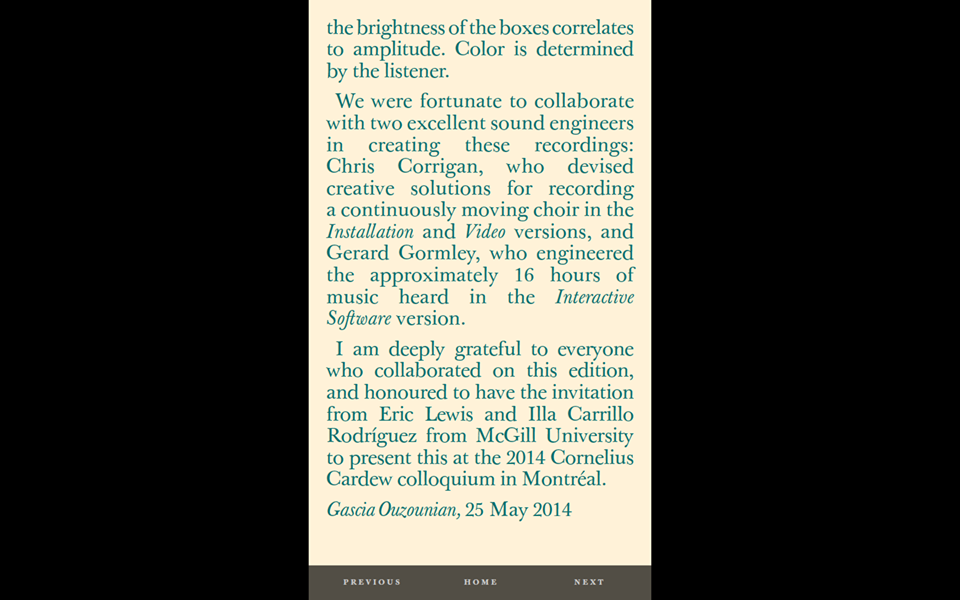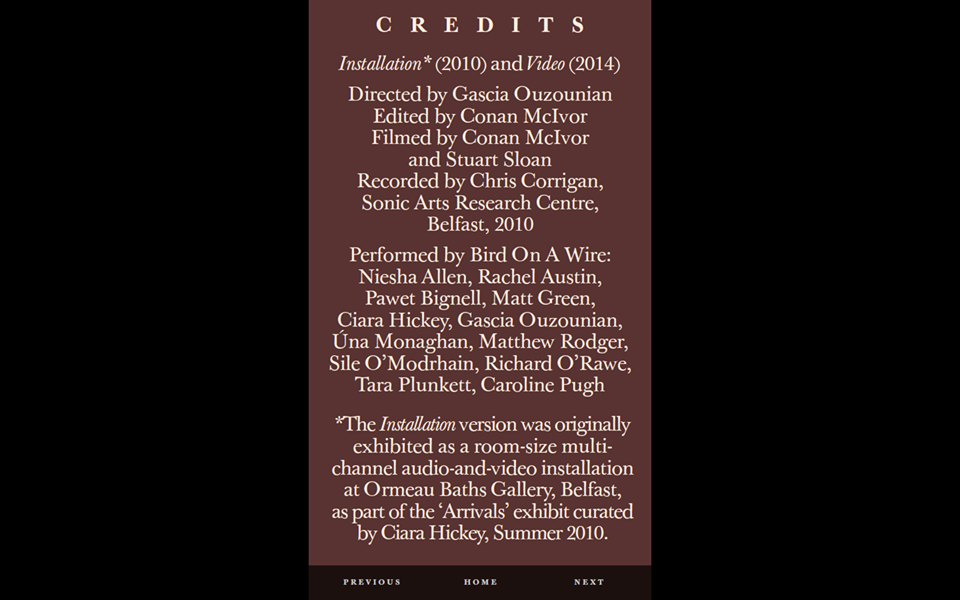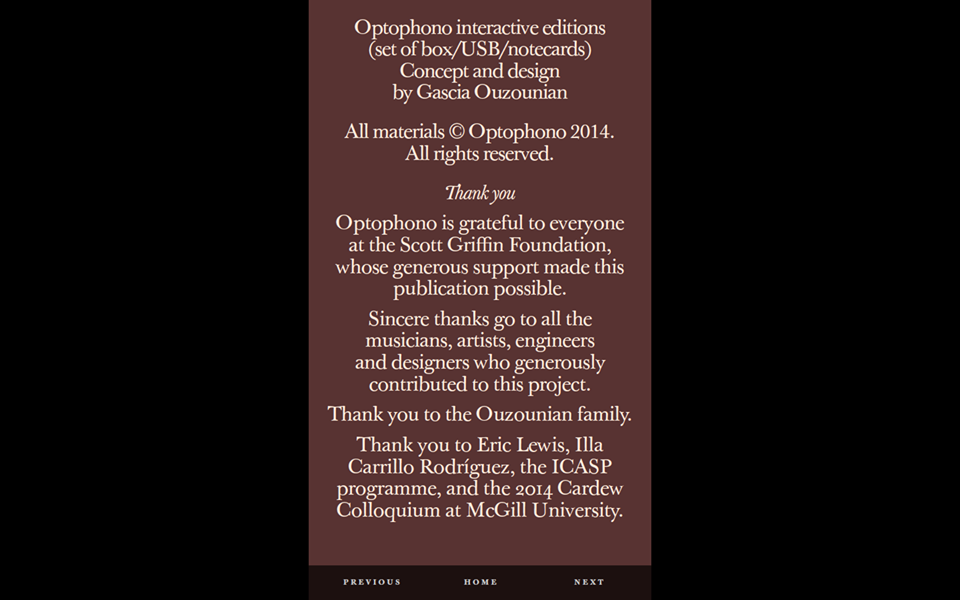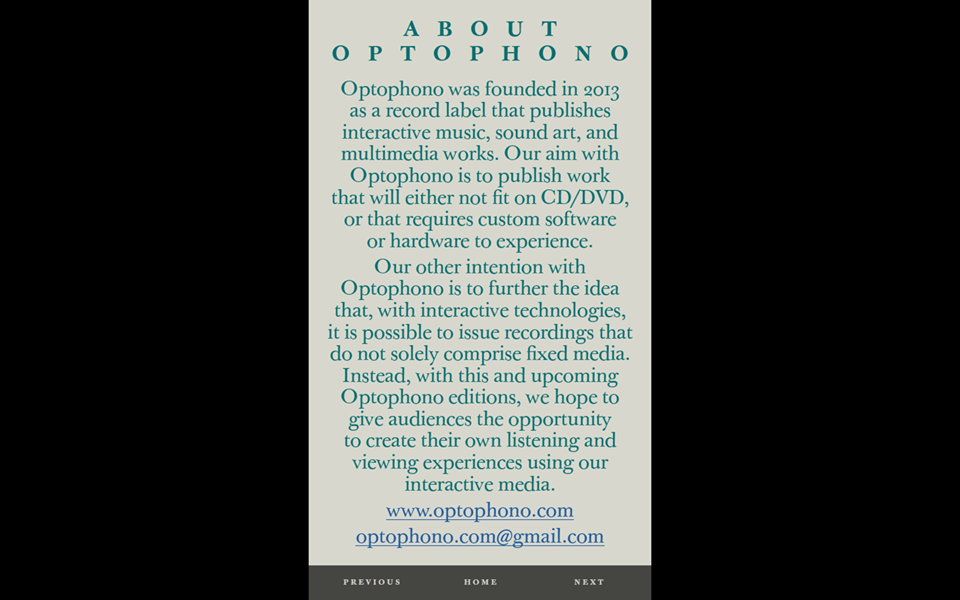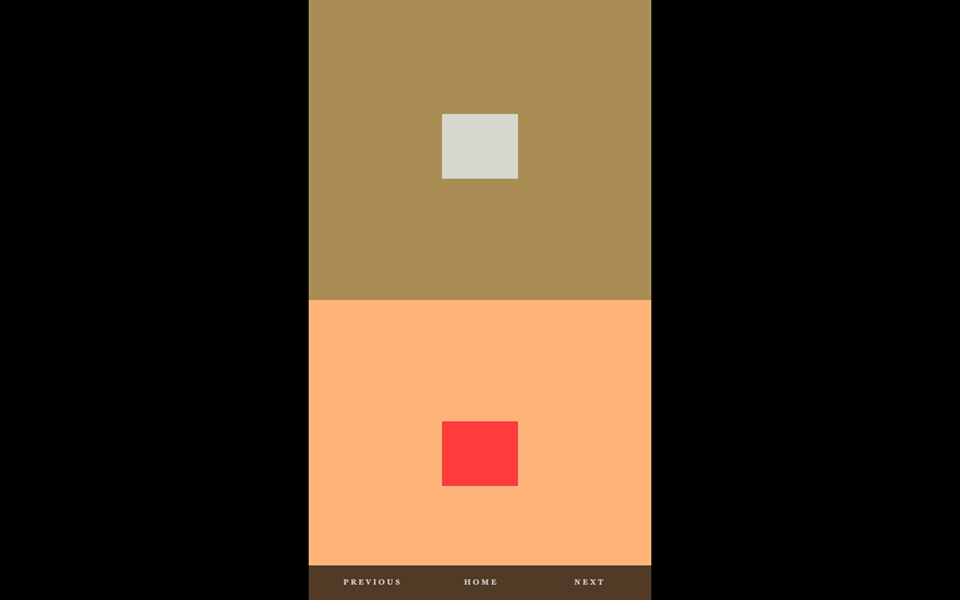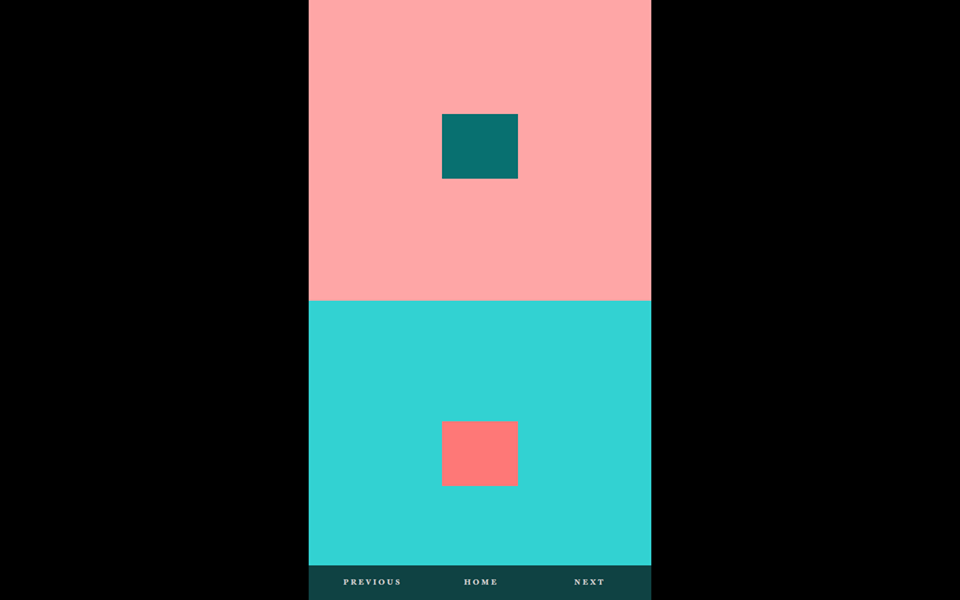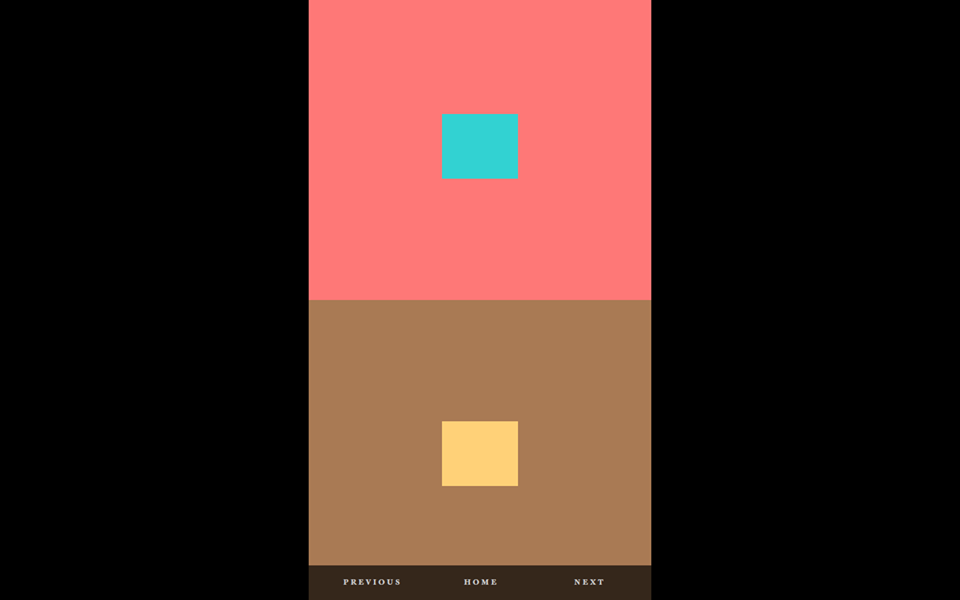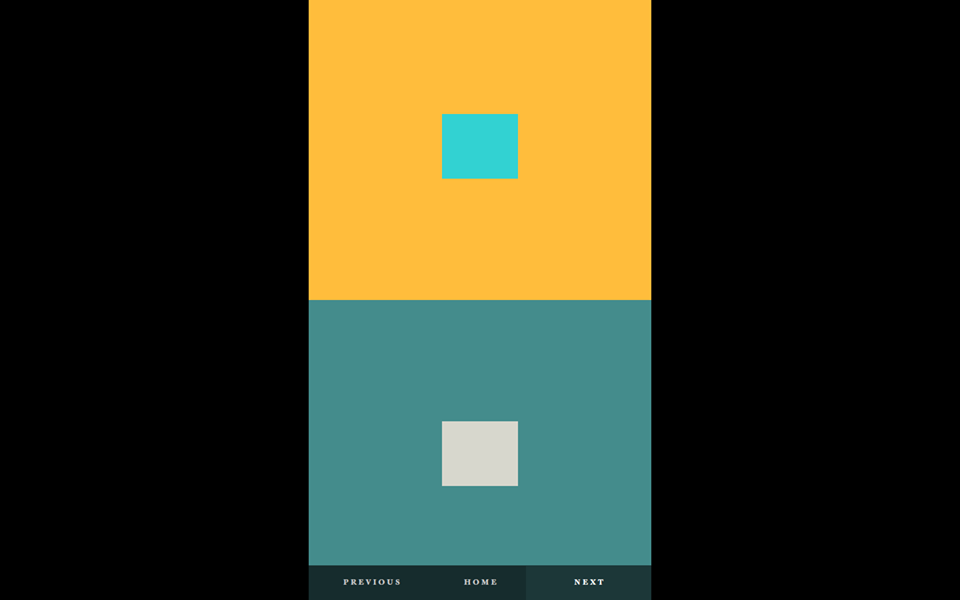Our projects, performances and limited editions
OĀZE (2019)
OĀZE is a sound map created by Una Lee. It tells the story of a woman’s life through voice narration, field recordings and graphic illustrations. This project is available in two formats: a limited edition physical box with cards, USB stick and software; and a downloadable edition (software only).
Acoustic Cities: london & beirut (2019)
We are excited to share a new edition featuring the work of 10 artists from the UK and Lebanon who explore the sound environments, acoustic potentialities and aural histories of two cities, London and Beirut.
The artists featured in the edition are Joan Baz, John Bingham-Hall, Gerard Gormley, Nathalie Harb, Omaya Malaeb, Nadim Mishlawi, Merijn Royaards, Youmna Saba, Mhamad Safa, and Christabel Stirling.
This edition is a collaboration between Institute for Global Prosperity UCL, Recomposing the City, RELIEF Centre, Optophono and Theatrum Mundi.
Come to our launch events.
CONSTRUCTING A RIVER (2018)
CONSTRUCTING A RIVER is a multi-part project by Matilde Meireles and Chrysoula Drakaki. The artists used field recording and photography to explore how the space along the River Lagan in Belfast has been shaped with different purposes in mind. Constructing a River frames the area between Weir 2 and the mouth of the river. At the centre of this search is the Lagan Weir.
Field recordings and photographs are designed to be experienced together through a book, a set of postcards, and a website.
THE RHYTHM OF A STRIDE: SONIC ESSAYS (2018-ongoing)
THE RHYTHM OF A STRIDE is a Progressive Web App created by Matilde Meireles. It follows Meireles's interest in phonography ('sonic photographs') as she explores and senses different spaces -- including such cities as Maputo and Belfast -- through walking, listening, observing and recording.
A Progressive Web App (PWA) lives online as a website, as well as offline as an app that can be downloaded onto smartphones and tablets. PWAs can currently be downloaded onto Android phones and tablets for an offline experience.
The PWA will continuously evolve as Meireles adds new material to the project.
The great learning, Paragraph 7 (installation version) (2010)
Our installation version of 'Paragraph 7' from Cornelius Cardew's composition The Great Learning. The installation, which was featured in the 'Arrivals' exhibit at Ormeau Baths Gallery in Belfast in 2010, consisted of two videos projected on opposite walls. Each video showed a different performance of 'Paragraph 7' featuring the choir Bird On A Wire. Audiences could walk between the two videos in an otherwise pitch-black room, and therefore have the sense that they were moving between both choirs.
Installation (2010) and Video (2014)
By Gascia Ouzounian and Conan McIvor
Featuring Bird On A Wire (choir)
Directed by Gascia Ouzounian
Edited by Conan McIvor
Filmed by Conan McIvor and Stuart Sloan
Recorded by Chris Corrigan,
Sonic Arts Research Centre, Belfast, 2010
Demo of paragraph 7 (Interactive Version) (2014)
More recently we created a software version of Cardew's 'Paragraph 7'. For the software version each voice in the choir is represented by an individual square. Listeners can move individual voices around in the stereo field and can turn each voice on or off during any point in the performance, thus creating their own live mix of the work as they listen.
Interactive Software Version of ‘Paragraph 7’ (2014)
By Gascia Ouzounian and Christopher Haworth
Featuring Bird On A Wire (choir)
Software design by Christopher Haworth
Concept and visual design by Gascia Ouzounian
Recorded by Gerard Gormley, Sonic Arts Research Centre, Belfast, 2014
cards from Optophono Edition 1: The Great Learning (Paragraph 7).
Optophono has been fortunate to work with the graphic designer Tom Hughes, who creates the gorgeous cards for each of our Limited Editions. Each set of cards has its own story to tell, sometimes incorporating games or reflecting on particular aspects of that edition.
PHANTOM WORDS DEMO (2013)
A demonstration of the phantom words effect, which was discovered by psychologist and acoustician Diana Deutsch. This effect is featured in the Optophono edition Long for this World.
Audio by Christopher Haworth. Film by Chloé Griffin and Gwenaël Rattke, from Projections 2 (2010).
demo for Long for this World (2013)
A short demo of our interactive composition and sleep app Long for this World.
By Gascia Ouzounian, Christopher Haworth and Julian Stein.
The Biber Project
We are currently working on an Optophono edition that will feature interactive versions of H.I.F. Biber's Rosary Sonatas (aka Mystery Sonatas), which date from the late 17th century. Listeners will be able to create their own accompaniment to the sonatas, which were originally scored for violin and harpsichord.
Music for SLeeping & Waking Minds (2010-14)
An all-night composition for four sleeping performers whose brainwave activity is mapped onto an 8-channel audio composition and live visuals. You can read about this project in this article, and see programme notes here.
Music for Sleeping & Waking Minds (2010-2014)
By Gascia Ouzounian (concept & composition)
R. Benjamin Knapp (physiological interaction design)
Eric Lyon (audio interaction design)
R. Luke DuBois (visual interaction design)
EDEN EDEN EDEN (2009)
Our first project for sleeping audiences. EDEN EDEN EDEN was conceived as an all-night composition and memory processing ritual. Audiences are invited to hear the composition as they sleep and awaken. Afterwards their memories coincide.
EDEN EDEN EDEN (2009)
By Gascia Ouzounian (music) and Chloé Griffin (film)
biomuse trio
Biomuse Trio (Ben Knapp, Eric Lyon, Gascia Ouzounian) is an ensemble that creates music from physiological signals. This video shows Ben Knapp in a rehearsal of Eric Lyon's composition Stem Cells at Virginia Tech in April 2012. Knapp is wearing the Biomuse, a collection of modular bio-signal sensors that he designed. For this composition the Biomuse is measuring facial EMG, EEG and eye motion, heart rate, and GSR (Galvanic Skin Response). During performance, members of the audience are also wired for GSR and heart rate, which are physiological indicators of emotion. The music evolves according to physiological and emotional trajectories, both composed and improvised.





